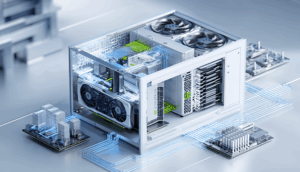The relentless march of technology dictates constant evolution in industrial and medical sectors. At the heart of this evolution lies reliable data communication, and that reliability hinges on the quality and performance of the cables used. As we look towards 2025, several key trends are shaping the landscape of industrial and medical data communication cables, demanding careful consideration for system designers and integrators.

One of the most significant trends is the increasing demand for higher bandwidth and faster data transmission speeds. The proliferation of IoT devices, sophisticated sensors, and real-time data analytics requires cables capable of handling massive data throughput without compromising signal integrity. This is driving innovation in cable design, with a focus on improved shielding, lower attenuation, and advanced materials that minimize signal loss over extended distances. Look for increased adoption of Category 8 cables and emerging technologies that push the boundaries of data transmission capabilities. Furthermore, Power over Ethernet (PoE) advancements will continue to fuel the need for robust cables capable of delivering both power and data efficiently and reliably.
Another crucial aspect is the growing emphasis on environmental resilience and compliance with stringent industry standards. Industrial and medical environments often expose cables to harsh conditions, including extreme temperatures, chemical exposure, vibration, and electromagnetic interference (EMI). Cables must be designed to withstand these challenges and maintain optimal performance over their lifespan. This necessitates the use of specialized jacketing materials, robust connectors, and thorough testing to ensure compliance with standards such as UL, IEC, and RoHS. The demand for halogen-free cables, which minimize the release of toxic substances in the event of a fire, is also gaining momentum due to increasing environmental awareness and stricter regulations. We are also seeing a greater push for cable designs that minimize the generation of particulate matter, especially critical in medical cleanroom environments.

Miniaturization and flexibility are also key considerations. As devices become smaller and more portable, the need for compact and flexible cables becomes paramount. This requires innovative cable designs that minimize the cable diameter and bending radius without compromising performance or durability. Advanced manufacturing techniques and the use of high-strength materials are enabling the production of cables that can withstand repeated flexing and bending, ensuring reliable connectivity in dynamic applications. This trend is particularly relevant in medical devices, where space is often limited and cables need to conform to complex geometries.
Finally, cybersecurity is an increasingly important concern. As industrial and medical systems become more interconnected, they become more vulnerable to cyberattacks. Cables can play a role in mitigating these risks by incorporating features such as shielded designs that prevent signal interception and data tampering. Furthermore, the use of secure connectors and authentication protocols can help to prevent unauthorized access to critical data. As cybersecurity threats become more sophisticated, cable manufacturers are developing innovative solutions to protect data integrity and confidentiality.